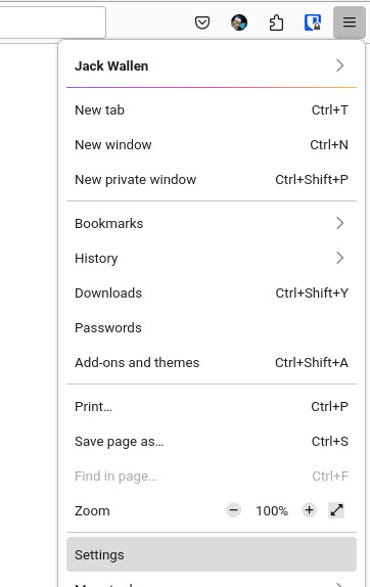Anadolu Agency/Contributor/Getty Images
I tend to block pop-ups because I find that they too often prevent me from enjoying a website. Pop-ups come in various forms: advertisements, warnings or general information. It often happens that I’m reading something and, lo and behold, a pop-up window disturbs me, forcing me to pick up my mouse to close it.
Fortunately, pop-up blockers have become very effective.
However, every now and then I come across a site that doesn’t work properly when a pop-up blocker is enabled. If this site is important to me, then I will add an exception to it so that the pop-ups work as expected and I can enjoy the site.
With the Firefox browser, this is quite easy to do. Let me show you how.
How to add an exception to pop-up blocker: method one
The only thing you will need is an instance of Firefox running on your desktop or laptop. I suggest you make sure your Firefox version is up to date (for security reasons). The demonstration will be done on version 117.0 of the Firefox browser. There it’s done. So let’s allow some pop-ups.
1. Open Firefox Settings
Once the browser is open, click the three-line menu button located in the upper right corner and from the menu click Settings.

Access the Firefox settings window from the main menu. Screenshot by ZDNET France.
2. Go to Permissions
Click on Privacy and security in the left navigation bar, then scroll down to the section Permissions.


You can manage a number of permissions from this section. Screenshot by ZDNET France.
3. Open the Exceptions window
To the bottom of the section Permissionsclick on Exceptionswhich is associated with Block pop-ups. If you notice that the option Block pop-ups is not enabled, click the check box to enable it.
4. Add your first exception
In the pop-up window that appears, enter the full URL of the website you want to add as an exception. Once the URL is entered, click To allow and the site will be added as the first exception. You can continue adding more sites until you are finished.
Once the last site is added, click Save Changes to save popup exceptions.
Close the window Settings and it’s all good.

Adding an exception for pop-ups in Firefox is quite simple. Screenshot by ZDNET France.
How to add an exception to pop-up blocker: method two
There is another method to allow pop-ups on a site. Here’s how to do it.
1. Open the site in the browser
The first thing to do is open the site in question in Firefox. Once the site has loaded, click the padlock icon to the left of the address bar and in the drop-down menu click Secure connection.
In the menu that appears, click More information.

Access the pop-up blocker exception tool from the Firefox address bar. Screenshot by ZDNET France.
2. Enable pop-ups
In the pop-up window that appears, click the Permissions tab and scroll down until you see Open pop-ups. Make sure to uncheck the box Default permissionsthen click To allow.

You can manage a number of permissions for the site in question here. Screenshot by ZDNET France.
You can now close the pop-up window Page Information and return to Firefox. At this point, the site you have configured will be allowed to display pop-ups, and should therefore work as expected.
Source: “ZDNet.com”
